10 Unimaginable pet animals in home
Requirements, diet, Maintanance
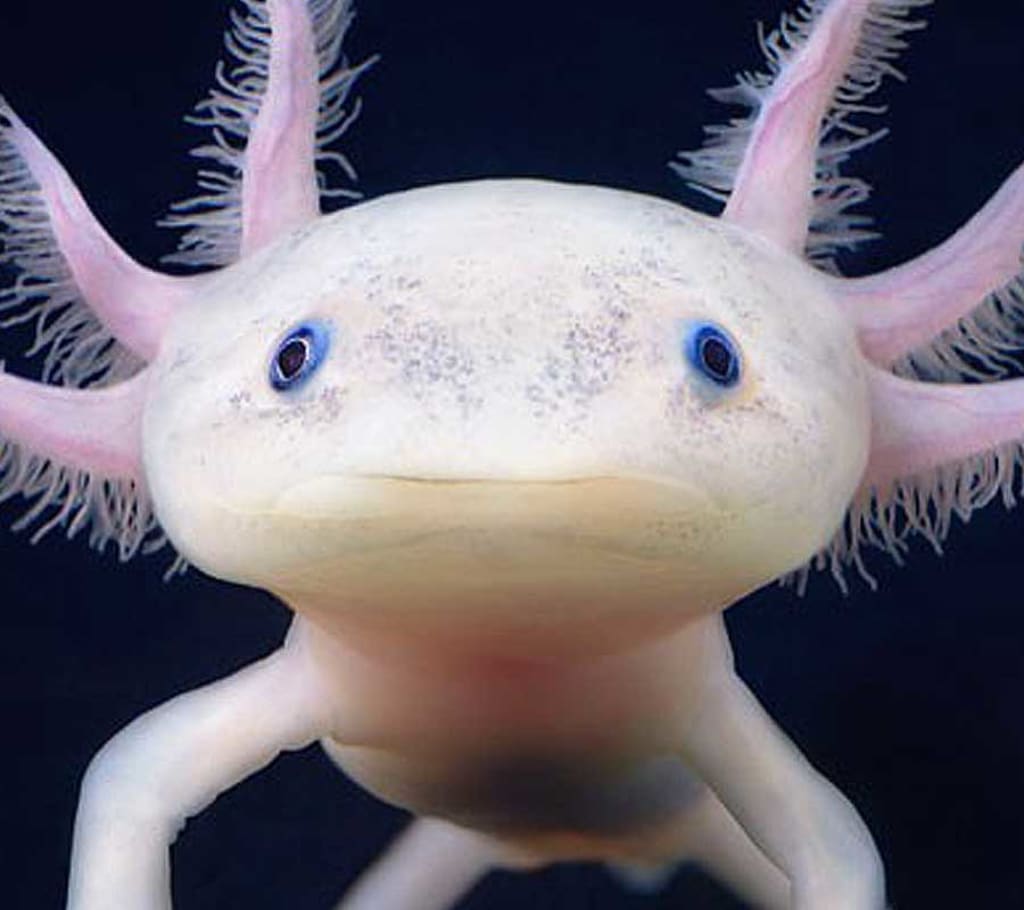
1. Axolotl (Ambystoma mexicanum)
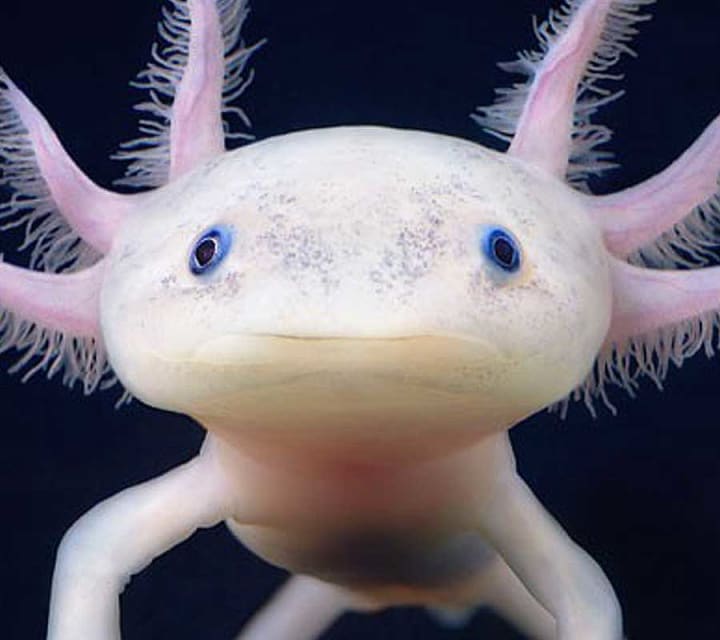
Traits:
Appearance: Axolotls are aquatic salamanders with distinctive external gills, which resemble feathery protrusions on either side of their heads. They come in various colors, including white, pink, and dark brown or black.
Size: Typically grow to about 6-12 inches in length.
Behavior: Axolotls are known for their calm and generally non-aggressive nature. They are relatively sedentary and spend a lot of time resting at the bottom of their tank.
Unique Characteristics:
Regeneration: Axolotls have remarkable regenerative abilities, able to regrow entire limbs, spinal cord segments, and even parts of their heart and brain.
Lifespan: They can live for up to 15 years with proper care.
Neoteny: Unlike other amphibians, axolotls retain their larval features throughout their entire life, never undergoing metamorphosis to become land-dwelling adults.
Care Requirements:
Tank Setup:
Size: A 20-gallon tank is suitable for a single axolotl, with additional space needed for each extra axolotl.
Water: Freshwater with a stable temperature between 60-64°F (16-18°C). Axolotls are sensitive to temperature fluctuations.
Filtration: A gentle filter is necessary to keep the water clean, but avoid strong currents as axolotls prefer still water.
Substrate: Fine sand or a bare-bottom tank is recommended to prevent ingestion of gravel, which can cause blockages.
Diet:
Food: Axolotls are carnivorous and thrive on a diet of high-quality pellets designed for carnivorous fish, as well as live or frozen foods like bloodworms, earthworms, and brine shrimp.
Feeding Frequency: Juveniles should be fed daily, while adults can be fed every other day.
Maintenance:
Water Quality: Regular water changes (about 20% weekly) are essential to maintain optimal water quality and prevent the buildup of harmful substances like ammonia and nitrites.
Temperature Control: Use a chiller or air conditioning to maintain the water temperature within the ideal range, especially in warmer climates.
Health Monitoring:
Common Issues: Keep an eye out for signs of stress, such as reduced appetite or changes in gill color, which could indicate poor water quality or inappropriate temperature.
Veterinary Care: Find a vet experienced with amphibians for regular check-ups and to address any health concerns.
Interaction:
Handling: Limit handling as it can cause stress and damage their delicate skin. If handling is necessary, do so with wet hands to avoid injuring them.
Enrichment: Provide hiding spots using PVC pipes, plants, or commercial aquarium decorations to create a stimulating environment.
Axolotls can make fascinating and unique pets for those who can meet their specific care requirements. Their unusual appearance and remarkable regenerative abilities make them a standout choice for aquarium enthusiasts.
2. Sugar Glider (Petaurus breviceps)
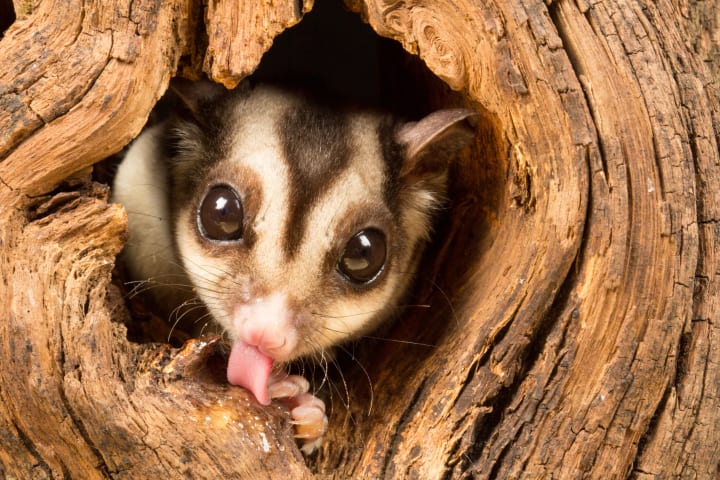
Appearance:
Sugar gliders are small marsupials native to Australia, Indonesia, and New Guinea.
They have large, expressive eyes and a membrane stretching from their wrists to their ankles, which allows them to glide through the air.
Their fur is soft and typically varies in color from grey to brown, with a cream-colored belly.
Behavior:
Nocturnal: Sugar gliders are most active during the night, spending their days sleeping in nests made of leaves or in tree hollows.
Social: Sugar gliders are highly social animals and thrive in small groups. In captivity, they can form strong bonds with their human caregivers.
Gliding: Their ability to glide allows them to travel long distances between trees in their natural habitat.
Care Requirements:
Habitat:
Sugar gliders require a large cage with plenty of vertical space for climbing and branches for exercise.
A nesting box or pouch should be provided for sleeping during the day.
Ensure the cage is escape-proof, as sugar gliders are skilled climbers and can squeeze through small openings.
Diet:
A balanced diet is essential for the health of sugar gliders. They are omnivores and eat a variety of foods in the wild, including insects, fruits, and nectar.
A staple diet for captive sugar gliders often consists of a mixture of fresh fruits, vegetables, protein sources (such as mealworms or crickets), and a specially formulated pellet diet.
They also enjoy treats like yogurt drops and mealworms.
Socialization:
Sugar gliders are highly social animals and require daily interaction with their owners to remain happy and healthy.
They enjoy being carried in a bonding pouch or pocket, where they can feel safe and close to their caregiver.
Providing toys and opportunities for mental stimulation, such as hiding treats in puzzle toys, can also enrich their environment.
Healthcare:
Regular veterinary check-ups are recommended to monitor their health and address any potential issues.
Nail trimming may be necessary to prevent overgrowth and discomfort.
Maintaining proper hygiene in their habitat, including cleaning the cage regularly, is essential to prevent health problems.
Legal Considerations:
Before acquiring a sugar glider as a pet, ensure that they are legal to own in your area. Some regions have restrictions or require permits for keeping exotic animals.
Sugar gliders can make delightful and rewarding pets for individuals willing to provide them with the proper care and attention they need. Their playful nature and unique gliding ability can bring joy to any household.
3. Pygmy Goat (Capra aegagrus hircus)
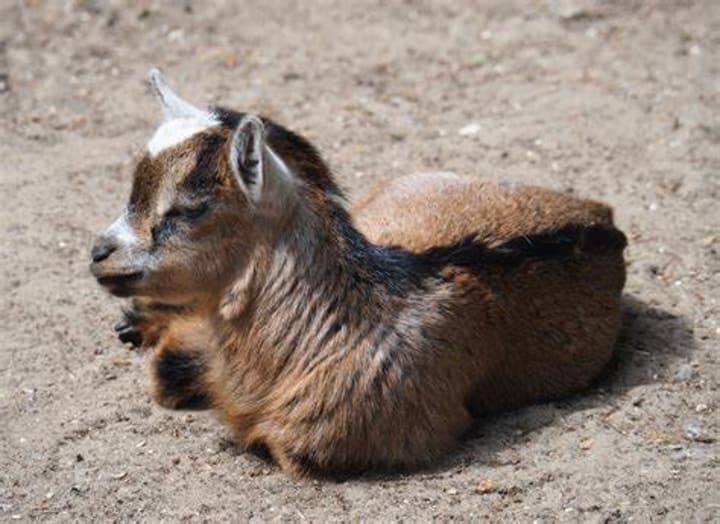
Appearance:
Pygmy goats are miniature domestic goats with a compact and robust body.
They have short legs, a broad chest, and a straight or slightly curved back.
Their coats come in various colors and patterns, including solid colors like black, brown, and white, as well as combinations such as caramel, agouti, and roan.
Behavior:
Pygmy goats are known for their friendly and sociable nature. They enjoy human interaction and can be quite affectionate.
They are active and curious animals, often engaging in playful behavior such as climbing, jumping, and head-butting.
While generally docile, male pygmy goats (bucks) may exhibit more aggressive behavior, especially during breeding season.
Care Requirements:
Habitat:
Pygmy goats require adequate outdoor space for grazing, exercise, and exploration. A securely fenced pasture is essential to prevent escape.
Shelter from the elements, such as a sturdy shed or barn, should be provided for protection from extreme weather conditions.
The pasture should also include structures for climbing and perching, as goats enjoy elevated vantage points.
Diet:
A balanced diet is crucial for the health of pygmy goats. They are herbivores and primarily eat hay, grass, shrubs, and tree leaves.
In addition to forage, they may benefit from supplemental feed such as goat pellets or grain, especially during periods of high energy expenditure, such as pregnancy or lactation.
Fresh, clean water should be available at all times.
Healthcare:
Regular veterinary check-ups are important to monitor the health of pygmy goats and address any medical concerns.
Hoof trimming is necessary to prevent overgrowth and discomfort. Goats may also require periodic deworming and vaccinations to maintain optimal health.
Proper sanitation of the living environment is essential to prevent the spread of diseases and parasites.
Socialization:
Pygmy goats are herd animals and thrive in the company of other goats. Keeping them in pairs or small groups can prevent loneliness and provide social interaction.
They also enjoy human companionship and can form strong bonds with their owners through gentle handling and positive reinforcement.
Legal Co-operation:
Before acquiring pygmy goats as pets, ensure that they are legal to own in your area. Some regions have zoning regulations or restrictions on keeping livestock within residential areas.
Pygmy goats can make charming and entertaining pets for individuals with adequate outdoor space and a willingness to provide them with the care and attention they need. Their playful demeanor and affectionate nature can bring joy to any household.
4. Fennec Fox (Vulpes zerda):
The Fennec Fox is a small nocturnal fox species native to the Sahara Desert and other arid regions of North Africa.
They are known for their distinctive large ears, which help dissipate heat and detect prey underground.
Fennec Foxes have adapted to desert environments and are capable of surviving in extreme temperatures.
Appearance:
Fennec Foxes have a pale yellow or cream-colored fur coat, which acts as camouflage in their desert habitat.
They have large ears that can measure up to 6 inches in length, proportionally larger than those of any other fox species.
Their slender bodies typically range from 9 to 16 inches in length, with a bushy tail adding an additional 7 to 12 inches.
Behavior:
Nocturnal: Fennec Foxes are primarily active at night, spending the daytime hours resting in burrows to avoid the desert heat.
Social: They are social animals and often live in small family groups consisting of a breeding pair and their offspring.
Omnivorous: Fennec Foxes have a varied diet that includes insects, small mammals, birds, eggs, and desert plants. They are also known to eat fruits, roots, and seeds.
Care Requirements:
Habitat:
Fennec Foxes require a spacious enclosure that simulates their natural desert environment, complete with sand, rocks, and hiding spots.
The enclosure should be secure and escape-proof, as Fennec Foxes are skilled climbers and diggers.
Providing a temperature-controlled environment is essential, as they are sensitive to extreme temperatures and require access to shaded areas during hot weather.
Diet:
A balanced diet for Fennec Foxes includes a combination of high-quality commercial fox food, insects (such as crickets and mealworms), lean meats, fruits, and vegetables.
Offer fresh water at all times, as Fennec Foxes have a low tolerance for dehydration.
Enrichment:
Fennec Foxes are intelligent and curious animals that require mental stimulation and physical exercise.
Provide toys, tunnels, and platforms for climbing and exploration. Puzzle feeders and interactive toys can also help keep them mentally engaged.
Socialization:
Fennec Foxes benefit from social interaction with their owners and may form strong bonds with individuals who provide them with care and attention.
Early socialization is important to ensure they are comfortable with human handling and interaction.
Legal Considerations:
Before acquiring a Fennec Fox as a pet, ensure that they are legal to own in your area. Some regions have regulations or restrictions on exotic animal ownership.
Fennec Foxes can make fascinating and engaging pets for experienced owners who are willing to meet their specific care requirements. However, they are not suitable for everyone and require careful consideration before bringing one into your home.
4. Fennec Fox (Vulpes zerda):
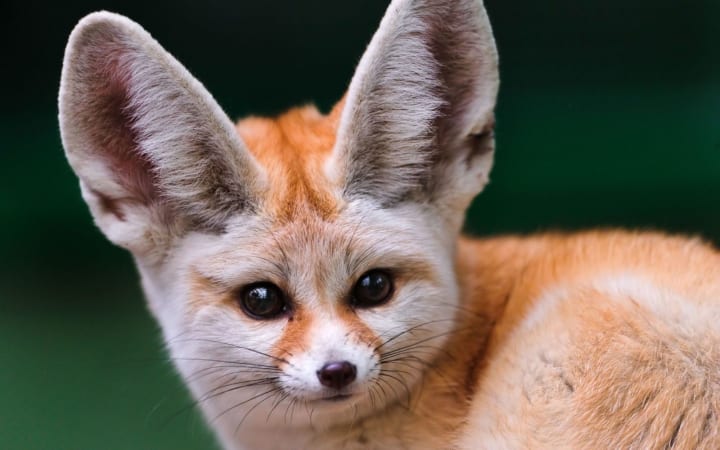
The Fennec Fox is a small nocturnal fox species native to the Sahara Desert and other arid regions of North Africa.
They are known for their distinctive large ears, which help dissipate heat and detect prey underground.
Fennec Foxes have adapted to desert environments and are capable of surviving in extreme temperatures.
Appearance:
Fennec Foxes have a pale yellow or cream-colored fur coat, which acts as camouflage in their desert habitat.
They have large ears that can measure up to 6 inches in length, proportionally larger than those of any other fox species.
Their slender bodies typically range from 9 to 16 inches in length, with a bushy tail adding an additional 7 to 12 inches.
Behavior:
Nocturnal: Fennec Foxes are primarily active at night, spending the daytime hours resting in burrows to avoid the desert heat.
Social: They are social animals and often live in small family groups consisting of a breeding pair and their offspring.
Omnivorous: Fennec Foxes have a varied diet that includes insects, small mammals, birds, eggs, and desert plants. They are also known to eat fruits, roots, and seeds.
Care Requirements:
Habitat:
Fennec Foxes require a spacious enclosure that simulates their natural desert environment, complete with sand, rocks, and hiding spots.
The enclosure should be secure and escape-proof, as Fennec Foxes are skilled climbers and diggers.
Providing a temperature-controlled environment is essential, as they are sensitive to extreme temperatures and require access to shaded areas during hot weather.
Diet:
A balanced diet for Fennec Foxes includes a combination of high-quality commercial fox food, insects (such as crickets and mealworms), lean meats, fruits, and vegetables.
Offer fresh water at all times, as Fennec Foxes have a low tolerance for dehydration.
Enrichment:
Fennec Foxes are intelligent and curious animals that require mental stimulation and physical exercise.
Provide toys, tunnels, and platforms for climbing and exploration. Puzzle feeders and interactive toys can also help keep them mentally engaged.
Socialization:
Fennec Foxes benefit from social interaction with their owners and may form strong bonds with individuals who provide them with care and attention.
Early socialization is important to ensure they are comfortable with human handling and interaction.
Legal Considerations:
Before acquiring a Fennec Fox as a pet, ensure that they are legal to own in your area. Some regions have regulations or restrictions on exotic animal ownership.
Fennec Foxes can make fascinating and engaging pets for experienced owners who are willing to meet their specific care requirements. However, they are not suitable for everyone and require careful consideration before bringing one into your home.
5. Tarantula:
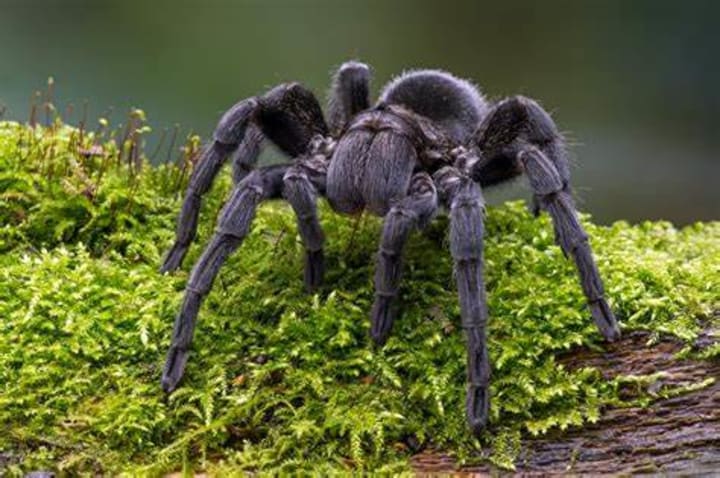
Tarantulas are a diverse group of large, hairy spiders belonging to the family Theraphosidae.
They are found in various habitats worldwide, including tropical rainforests, deserts, and grasslands.
Tarantulas are known for their intimidating appearance and venomous bite, although most species are relatively harmless to humans.
Appearance:
Tarantulas vary greatly in size, color, and appearance depending on the species. They can range from a few inches to over a foot in leg span.
Most tarantulas have robust bodies covered in dense, hairy bristles, which serve as sensory organs and provide protection.
Their eight legs are equipped with hooked claws for gripping and climbing, and many species have large, fang-like chelicerae used for injecting venom into prey.
Behavior:
Nocturnal: Tarantulas are primarily active at night, hunting for prey and exploring their surroundings under the cover of darkness.
Ambush Predators: They typically wait in burrows or camouflaged hides, ambushing passing insects and small vertebrates.
Defense Mechanisms: When threatened, tarantulas may use their urticating hairs, which they can flick from their abdomen as a form of defense. Some species may also rear up on their hind legs or bite as a last resort.
Care Requirements:
Habitat:
Tarantulas are solitary animals and should be housed individually to prevent aggression and cannibalism.
Enclosures should be escape-proof and provide adequate ventilation, substrate for burrowing, hiding spots, and climbing structures.
The size of the enclosure should be appropriate for the size of the tarantula, with enough space for movement and exploration.
Diet:
Tarantulas are carnivorous and feed primarily on live prey, including insects, small rodents, and other arthropods.
Offer a variety of prey items, such as crickets, mealworms, roaches, and appropriately sized feeder insects.
Prey should be gut-loaded (fed a nutritious diet) before being offered to the tarantula to ensure optimal nutrition.
Temperature and Humidity:
Maintain appropriate temperature and humidity levels within the tarantula's enclosure, as these vary depending on the species' natural habitat.
Provide a temperature gradient and humidity gradient within the enclosure, allowing the tarantula to regulate its body temperature and hydration levels as needed.
Handling:
Tarantulas are generally not considered "handling pets" and may become stressed or defensive when handled.
If handling is necessary for maintenance or relocation, use caution and gentle handling techniques to avoid injuring the tarantula or yourself.
Health Monitoring:
Regularly observe your tarantula for signs of health issues, including changes in appetite, activity level, and appearance.
Seek veterinary care from a qualified exotic animal veterinarian if you suspect any health concerns or abnormalities.
Legal Considerations:
Before acquiring a tarantula as a pet, familiarize yourself with local regulations and restrictions on exotic pet ownership.
Some species of tarantulas may be protected by law or subject to trade restrictions, especially those listed on conservation watchlists.
Tarantulas can be fascinating pets for enthusiasts interested in arachnids and are relatively low-maintenance compared to other pets. However, they require specialized care and should only be kept by individuals willing to provide for their needs and respect their natural behaviors.
6. Miniature Donkey:
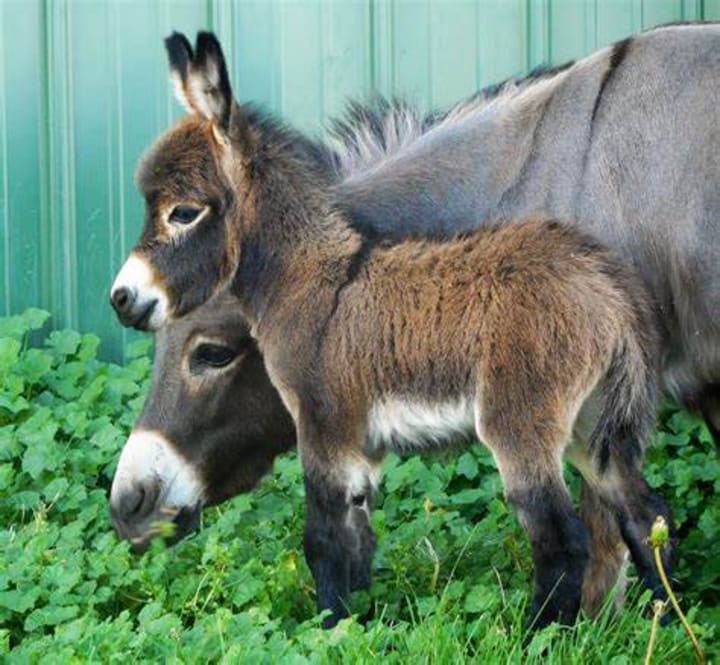
Miniature Donkeys, also known as Mini Donkeys or Miniature Mediterranean Donkeys, are small domesticated donkeys bred for their size and gentle temperament.
They originated from the Mediterranean islands of Sicily and Sardinia and were historically used as beasts of burden and companions.
Miniature Donkeys have become popular as pets and companion animals due to their friendly nature, intelligence, and adaptability.
Appearance:
Miniature Donkeys typically stand between 32 to 36 inches tall at the shoulder, although some may be slightly larger or smaller.
They have a compact, stocky build with short legs and rounded hooves.
Miniature Donkeys come in various coat colors, including gray, brown, black, and spotted patterns.
Behavior:
Miniature Donkeys are known for their gentle and sociable disposition. They enjoy human company and form strong bonds with their owners.
They are intelligent and curious animals, often displaying playful behavior such as running, jumping, and rolling.
Miniature Donkeys are highly social and thrive in the company of other donkeys or livestock. They may become lonely or anxious if kept alone.
Care Requirements:
Habitat:
Miniature Donkeys require access to outdoor space for grazing, exercise, and social interaction.
A securely fenced pasture with shelter from the elements, such as a sturdy shed or barn, is essential to protect them from extreme weather conditions.
The pasture should be free of hazards such as toxic plants, sharp objects, or steep terrain.
Diet:
A balanced diet for Miniature Donkeys consists primarily of high-quality grass hay, supplemented with small amounts of grain, minerals, and fresh water.
Avoid overfeeding, as Miniature Donkeys are prone to obesity, which can lead to health problems such as laminitis and joint issues.
Monitor their body condition and adjust their diet accordingly to maintain a healthy weight.
Healthcare:
Regular veterinary check-ups are important to monitor the health of Miniature Donkeys and address any medical concerns.
Hoof trimming is necessary to prevent overgrowth and maintain proper foot health. Dental care and parasite control are also essential for their well-being.
Provide appropriate vaccinations and preventive care as recommended by your veterinarian.
Socialization:
Miniature Donkeys are social herd animals and thrive in the company of other donkeys or livestock.
They enjoy interacting with humans and can form strong bonds with their owners through gentle handling, grooming, and positive reinforcement training.
Legal Considerations:
Before acquiring a Miniature Donkey as a pet, familiarize yourself with local regulations and zoning laws regarding livestock ownership.
Ensure that you have adequate space and resources to meet the needs of a Miniature Donkey, including access to pasture, shelter, and veterinary care.
Miniature Donkeys can make wonderful pets for individuals or families with a love for animals and a desire to provide them with a caring and enriching environment. Their friendly demeanor and charming personality make them delightful companions for people of all ages.
7. Kinkajou (Potos flavus):
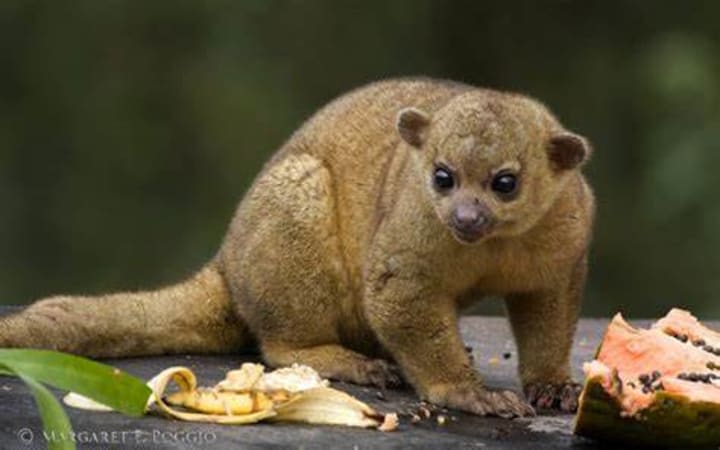
The Kinkajou, also known as the "Honey Bear," is a small arboreal mammal native to Central and South America.
They are members of the Procyonidae family, which also includes raccoons and coatis.
Kinkajous are known for their long prehensile tail, which they use for climbing and balancing in the trees.
Appearance:
Kinkajous have a slender, elongated body with short legs and a bushy, ringed tail that can be as long as their body.
They have a round head with large, round eyes, small rounded ears, and a pointed snout.
Their fur is dense and soft, typically golden or honey-colored, with a lighter underside.
Behavior:
Nocturnal: Kinkajous are primarily active at night, spending their days sleeping in tree hollows or nests.
Arboreal: They are well-adapted to life in the treetops and are skilled climbers, using their prehensile tail and grasping hands to maneuver through the branches.
Social: Kinkajous are solitary animals in the wild but may form small family groups or pairs during the breeding season.
Diet: Kinkajous are omnivores, feeding on a variety of fruits, flowers, nectar, insects, and small vertebrates in the wild.
Care Requirements:
Habitat:
Kinkajous require a spacious and vertically oriented enclosure with plenty of branches, perches, and climbing structures.
The enclosure should simulate their natural habitat, with hiding spots, nesting materials, and opportunities for exploration.
Temperature and humidity levels should be maintained within the appropriate range for Kinkajous' health and comfort.
Diet:
A balanced diet for Kinkajous should include a variety of fresh fruits, vegetables, nuts, and commercial diets formulated for exotic omnivores.
Offer a selection of fruits such as bananas, grapes, apples, and berries, as well as vegetables like sweet potatoes, squash, and leafy greens.
Provide access to clean water at all times, as Kinkajous have a high moisture requirement.
Enrichment:
Kinkajous are intelligent and active animals that require mental stimulation and physical exercise.
Offer toys, puzzles, and foraging opportunities to keep them entertained and engaged.
Rotate and vary enrichment activities regularly to prevent boredom and encourage natural behaviors.
Socialization:
Kinkajous can form strong bonds with their owners through positive interaction and socialization.
Handle them gently and respectfully, allowing them to become accustomed to human touch and presence.
Supervise interactions with other pets to ensure the safety and well-being of all animals involved.
Legal Considerations:
Before acquiring a Kinkajou as a pet, research local regulations and permit requirements regarding exotic animal ownership.
Ensure that you are prepared to provide the necessary care and environment to meet the needs of a Kinkajou before bringing one into your home.
Kinkajous can make unique and rewarding pets for experienced exotic animal enthusiasts willing to invest time, effort, and resources into their care and well-being. Their charming personality and captivating appearance can bring joy and fascination to any household.
8. Chinchilla (Chinchilla lanigera):
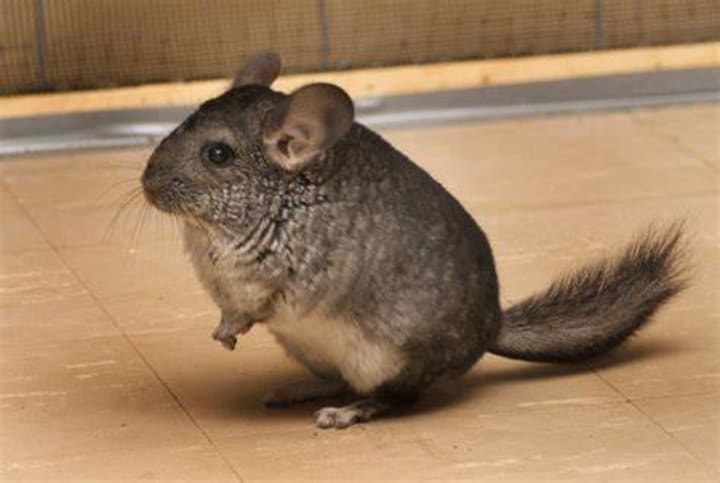
Chinchillas are small rodents native to the Andes mountains of South America, primarily found in countries such as Chile, Peru, Bolivia, and Argentina.
They are known for their soft and dense fur, which is highly valued in the fur trade.
Chinchillas have become popular as pets due to their friendly demeanor, low odor, and adorable appearance.
Appearance:
Chinchillas have a compact and rounded body with a short neck, large eyes, and rounded ears.
Their fur is incredibly soft and dense, with a thick undercoat and longer guard hairs. They come in various colors, including gray, white, beige, black, and mosaic patterns.
Behavior:
Nocturnal: Chinchillas are most active during the night, spending the daytime hours resting and grooming in their burrows or nests.
Social: They are social animals that live in groups called herds in the wild. In captivity, they can form strong bonds with their owners or other chinchillas.
Dust Bathing: Chinchillas have a unique grooming behavior where they roll in fine volcanic dust to remove excess oil and moisture from their fur. Dust baths are essential for maintaining their coat health.
Care Requirements:
Habitat:
Chinchillas require a spacious cage with multiple levels, platforms, ramps, and hiding spots for exercise and enrichment.
The cage should have wire mesh walls and a solid floor to prevent injury and ensure ventilation.
Avoid placing the cage in direct sunlight or drafty areas, as chinchillas are sensitive to temperature extremes.
Diet:
A high-fiber diet is essential for chinchillas' digestive health. Offer unlimited access to fresh hay, such as timothy hay or orchard grass.
Provide a small amount of high-quality chinchilla pellets daily to supplement their hay diet and ensure they receive essential nutrients.
Offer fresh, clean water in a sipper bottle or bowl at all times, replacing it daily to prevent contamination.
Grooming:
Chinchillas require regular dust baths to keep their fur clean and healthy. Provide a dust bath house filled with chinchilla dust (finely ground volcanic pumice) a few times a week.
Trim their nails regularly to prevent overgrowth and discomfort. Use specialized small animal nail clippers or seek veterinary assistance if unsure.
Healthcare:
Schedule regular veterinary check-ups to monitor the health of your chinchilla and address any medical concerns.
Be vigilant for signs of dental problems, such as overgrown teeth or difficulty eating, which can occur due to their continuously growing teeth.
Preventative care, such as providing appropriate diet, housing, and hygiene, can help maintain your chinchilla's overall well-being.
Legal Considerations:
Check local regulations and ordinances regarding exotic pet ownership, as chinchillas may be subject to specific laws or restrictions in some areas.
Ensure that you acquire your chinchilla from a reputable breeder or rescue organization to promote ethical and responsible pet ownership.
Chinchillas can make delightful pets for individuals or families willing to provide them with the care, attention, and enrichment they need to thrive. Their gentle nature, playful demeanor, and adorable antics can bring joy and companionship to any home.
9. Skunk:
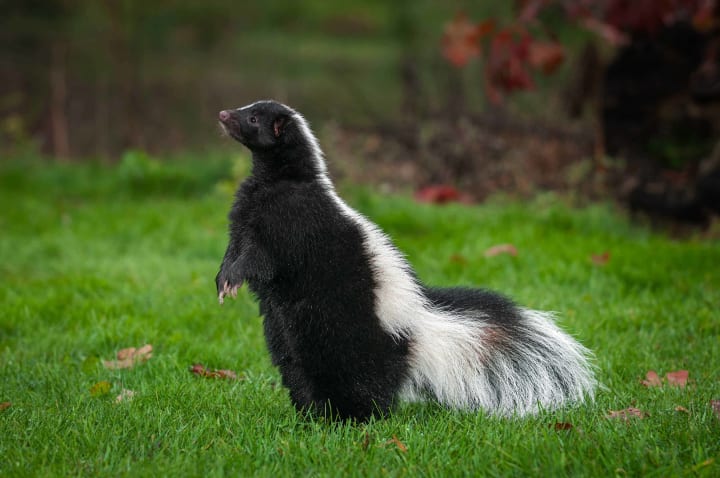
Skunks are small mammals known for their distinctive black and white fur patterns and their ability to spray a foul-smelling liquid as a defense mechanism.
They belong to the family Mephitidae and are native to the Americas, with several species found in North and South America.
Despite their reputation for being malodorous, skunks are generally shy and non-aggressive animals that prefer to avoid confrontation.
Appearance:
Skunks have a stocky body with short legs, a small head, and a bushy tail.
Their fur is typically black with white stripes or spots running down their back and sides, although coloration can vary among different species.
Skunks have well-developed scent glands located near their anus, which produce a strong-smelling secretion used for defense.
Behavior:
Nocturnal: Skunks are primarily active at night, foraging for food such as insects, small rodents, fruits, and plants.
Omnivorous: They have a varied diet that includes both plant and animal matter, depending on availability and season.
Defense Mechanism: Skunks can emit a pungent spray from their anal glands when threatened or cornered, which serves as a deterrent against predators.
Hibernation: In colder regions, skunks may enter a period of hibernation during the winter months to conserve energy and survive harsh weather conditions.
Care Requirements:
Habitat:
Skunks require a secure and spacious enclosure with adequate ventilation, shelter, and opportunities for enrichment.
The enclosure should include hiding spots, climbing structures, and toys to stimulate their natural behaviors and prevent boredom.
Skunks are excellent diggers, so the enclosure should have a solid floor or be buried underground to prevent escape.
Diet:
A balanced diet for pet skunks typically consists of high-quality commercial skunk food, supplemented with fresh fruits, vegetables, insects, and lean meats.
Offer a variety of food items to ensure they receive essential nutrients and prevent dietary deficiencies.
Avoid feeding foods that are toxic or harmful to skunks, such as chocolate, caffeine, onions, garlic, and high-fat or sugary treats.
Socialization:
Skunks are intelligent and sociable animals that benefit from regular interaction and mental stimulation.
Handle them gently and provide positive reinforcement training to build trust and strengthen the bond between you and your skunk.
Supervise interactions with other pets to prevent conflicts and ensure the safety of all animals involved.
Healthcare:
Schedule regular veterinary check-ups to monitor the health of your skunk and address any medical concerns.
Vaccinate your skunk against common diseases, such as rabies and distemper, as recommended by your veterinarian.
Practice good hygiene by cleaning and disinfecting the enclosure regularly to prevent the spread of parasites and infectious diseases.
Legal Considerations:
Check local regulations and ordinances regarding skunk ownership, as they may be considered exotic pets and subject to specific laws or restrictions in some areas.
Obtain any required permits or licenses before acquiring a pet skunk, and ensure that you adhere to all applicable regulations for their care and housing.
Pet skunks can make unique and affectionate companions for experienced exotic animal enthusiasts willing to meet their specific care requirements. With proper socialization, training, and care, skunks can thrive in a home environment and bring joy and companionship to their owners.
10. Capybara (Hydrochoerus hydrochaeris):
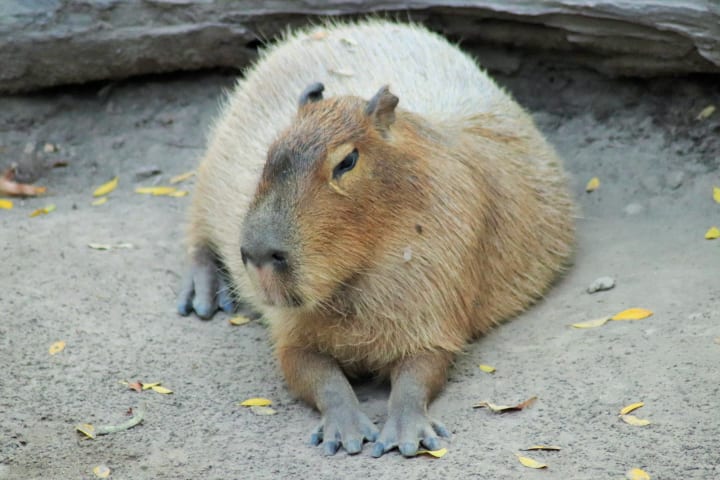
The Capybara is the largest rodent in the world, native to South America and found in countries such as Brazil, Venezuela, Colombia, and Argentina.
They inhabit a variety of habitats, including swamps, rivers, and grasslands, where they live in social groups near water sources.
Capybaras are semi-aquatic mammals known for their aquatic adaptations, including webbed feet and the ability to swim underwater.
Appearance:
Capybaras have a large, barrel-shaped body with short legs, a short tail, and a blunt muzzle.
They have coarse, bristly fur that ranges in color from brown to reddish-brown or gray, providing camouflage in their natural habitat.
Adult Capybaras can weigh between 35 to 66 kilograms (77 to 146 pounds) and measure up to 50 to 65 centimeters (20 to 25 inches) in height at the shoulder.
Behavior:
Social: Capybaras are highly social animals that live in groups called herds, consisting of up to 10 to 20 individuals.
Herbivorous: They are herbivores, feeding primarily on grasses, aquatic plants, and other vegetation. Capybaras have specialized digestive systems adapted for processing fibrous plant material.
Aquatic: Capybaras are excellent swimmers and spend a significant amount of time in the water, using it to escape predators and regulate their body temperature.
Care Requirements:
Habitat:
Capybaras require a large, spacious enclosure with access to water for swimming and cooling off.
The enclosure should be securely fenced to prevent escape and provide ample space for grazing, foraging, and social interaction.
Provide shelters or structures for shade, resting, and hiding, as well as opportunities for burrowing and digging.
Diet:
Offer a diet consisting primarily of fresh grass hay, supplemented with a variety of leafy greens, vegetables, and fruits.
Provide access to clean, fresh water at all times, as Capybaras have high water requirements and may drink large quantities daily.
Monitor their diet and adjust food quantities as needed to maintain a healthy weight and prevent obesity-related health issues.
Socialization:
Capybaras are highly social animals that thrive in the company of their own kind. They should be housed in groups whenever possible to prevent loneliness and promote natural behaviors.
Introduce new Capybaras gradually and monitor their interactions to ensure compatibility and prevent aggression.
Handle them gently and respectfully to build trust and strengthen the bond between you and your Capybara.
Healthcare:
Schedule regular veterinary check-ups to monitor the health of your Capybara and address any medical concerns.
Keep their enclosure clean and well-maintained to prevent the spread of parasites and infectious diseases.
Provide enrichment activities and mental stimulation to keep your Capybara physically and mentally stimulated, such as toys, puzzles, and foraging opportunities.
Legal Considerations:
Check local regulations and ordinances regarding Capybara ownership, as they may be considered exotic pets and subject to specific laws or restrictions in some areas.
Obtain any required permits or licenses before acquiring a pet Capybara, and ensure that you adhere to all applicable regulations for their care and housing.
Pet Capybaras can make fascinating and rewarding companions for individuals or families with the space and resources to accommodate their specific needs. With proper care, socialization, and enrichment, Capybaras can thrive in a home environment and bring joy and fascination to their owners.
About the Creator
Enjoyed the story? Support the Creator.
Subscribe for free to receive all their stories in your feed. You could also pledge your support or give them a one-off tip, letting them know you appreciate their work.


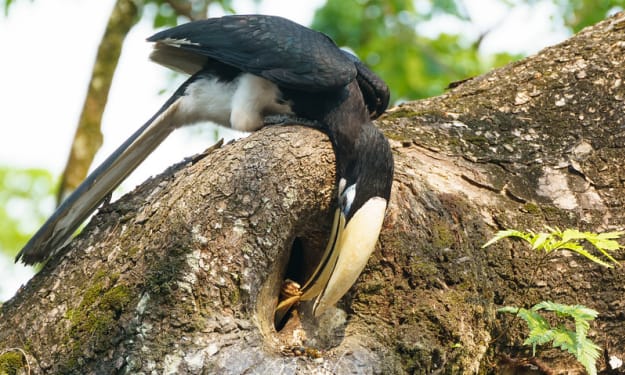



Comments
There are no comments for this story
Be the first to respond and start the conversation.